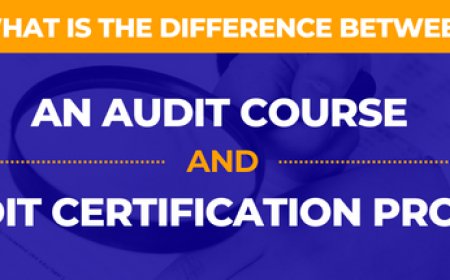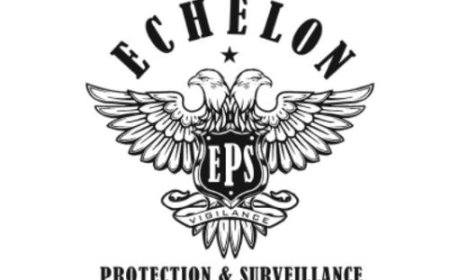How to Fix Website Errors
How to Fix Website Errors Website errors are more than just technical glitches—they’re silent revenue killers, user experience destroyers, and SEO inhibitors. Whether you’re managing a small business site, an e-commerce platform, or a content-heavy blog, unresolved errors can lead to lost traffic, lower search rankings, and frustrated visitors who never return. Fixing website errors isn’t optional
How to Fix Website Errors
Website errors are more than just technical glitches—they’re silent revenue killers, user experience destroyers, and SEO inhibitors. Whether you’re managing a small business site, an e-commerce platform, or a content-heavy blog, unresolved errors can lead to lost traffic, lower search rankings, and frustrated visitors who never return. Fixing website errors isn’t optional; it’s a critical maintenance task that ensures your digital presence remains fast, functional, and authoritative in the eyes of both users and search engines.
This comprehensive guide walks you through every major category of website errors—from broken links and server issues to indexing problems and mobile usability flaws. You’ll learn how to diagnose them systematically, prioritize fixes based on impact, and implement long-term solutions that prevent recurrence. By the end, you’ll have a clear, actionable roadmap to maintain a clean, error-free website that performs optimally across all platforms and devices.
Step-by-Step Guide
1. Identify the Types of Website Errors
Before you can fix anything, you need to know what you’re dealing with. Website errors fall into several broad categories:
- HTTP Status Code Errors (e.g., 404 Not Found, 500 Internal Server Error)
- Broken Links (internal and external)
- Indexing Issues (pages blocked by robots.txt, noindex tags, or crawl errors)
- Slow Page Load Times
- Mobile Usability Problems
- SSL/TLS Certificate Errors
- Structured Data Errors (schema markup issues)
- Redirect Chains and Loops
- Duplicate Content
Each type of error affects your site differently. For example, a 404 error might frustrate a single visitor, but hundreds of them can signal to Google that your site is poorly maintained. Similarly, a slow-loading homepage can reduce conversions even if all other pages are fast. Begin by cataloging all known errors using diagnostic tools discussed later in this guide.
2. Use Diagnostic Tools to Audit Your Site
Manual inspection is insufficient for modern websites. Use automated tools to scan your entire site efficiently:
- Google Search Console – Provides crawl errors, mobile usability reports, indexing status, and coverage issues.
- Screaming Frog SEO Spider – Crawls up to 500 URLs for free (more with paid version) and identifies broken links, redirects, status codes, and meta tags.
- GTmetrix or PageSpeed Insights – Analyze page speed, render-blocking resources, and optimization opportunities.
- SSL Labs (SSL Test) – Checks certificate validity, chain issues, and security configuration.
- Rich Results Test – Validates structured data markup for schema.org implementations.
Run a full crawl with Screaming Frog and export the results. Filter for status codes 4xx and 5xx, then cross-reference with Google Search Console’s “Coverage” report. Look for patterns: Are all 404s from old product pages? Are 500 errors concentrated on a specific CMS plugin? This helps you prioritize fixes.
3. Fix HTTP Status Code Errors
HTTP status codes tell browsers and search engines how to interpret a page’s response. Common problematic codes include:
404 Not Found
404s occur when a requested page doesn’t exist. They’re common after site migrations, URL restructuring, or deleted content.
Fix:
- Identify the source of the 404 using Google Search Console or Screaming Frog.
- If the content was permanently removed, implement a 301 redirect to the most relevant existing page (e.g., redirect /old-product to /new-product or /category).
- If the page should be restored, republish it with updated content.
- Never leave a 404 page as-is without a custom 404 page that guides users back to your homepage or key sections.
500 Internal Server Error
This is a server-side error. It can be caused by misconfigured .htaccess files, PHP memory limits, plugin conflicts, or database connection failures.
Fix:
- Check server error logs (via cPanel, FTP, or hosting dashboard).
- Temporarily disable plugins or themes (especially on WordPress) to isolate the cause.
- Increase PHP memory limit by adding
define('WP_MEMORY_LIMIT', '256M');to wp-config.php if applicable. - Verify file permissions: folders should be 755, files 644.
- Restore a recent backup if the error appeared after an update.
301 vs 302 Redirects
Using a 302 (temporary) redirect when you mean to use a 301 (permanent) can confuse search engines and dilute link equity.
Fix: Ensure all permanent URL changes use 301 redirects. Use Screaming Frog to filter for 302s and replace them with 301s where appropriate.
4. Repair Broken Internal and External Links
Broken internal links hurt site architecture and user navigation. Broken external links damage credibility and can affect SEO if they point to spammy or dead domains.
Fix:
- Use Screaming Frog to export all links with status codes 404 or 410.
- For internal links: Update the anchor text and URL to point to a live, relevant page. If the target page is gone, create a new one or redirect.
- For external links: Either remove them if they’re non-essential, or replace them with authoritative alternatives. If the external site is temporarily down, monitor it for a few weeks before removing.
- Set up a monthly automated link audit using tools like Ahrefs or SEMrush to catch new broken links early.
5. Resolve Indexing Issues
If Google can’t index your pages, they won’t appear in search results—even if they’re well-optimized.
Blocked by robots.txt
Accidentally blocking key pages in robots.txt is a common mistake.
Fix: In Google Search Console, go to “Coverage” > “Excluded.” Look for pages blocked by robots.txt. Edit your robots.txt file to allow crawling of essential pages. Example:
User-agent: *
Allow: /category/
Allow: /product/
Disallow: /admin/
Disallow: /search/
Noindex Tags
Accidental noindex meta tags on product or blog pages prevent indexing.
Fix: Use Screaming Frog to filter for “meta robots noindex.” Remove or change these tags to “index, follow” if the page should be indexed. In WordPress, check SEO plugins like Yoast or Rank Math for accidental noindex settings.
Crawl Errors in Search Console
Google may report “Crawl: Blocked by robots.txt,” “Crawl: Redirect error,” or “Crawl: Not found.”
Fix: Address each individually using the steps above. Use the “URL Inspection” tool in Search Console to test individual pages and request reindexing after fixes.
6. Optimize Page Speed
Page speed impacts both user experience and SEO rankings. Google uses Core Web Vitals (LCP, FID, CLS) as ranking factors.
Optimize Images
Large, unoptimized images are the
1 cause of slow load times.
Fix:
- Convert images to WebP format (25–35% smaller than JPEG/PNG).
- Use responsive images with
srcsetattributes. - Compress images using tools like TinyPNG, ShortPixel, or ImageOptim.
- Lazy-load images with native
loading="lazy"or plugins like WP Rocket.
Minify CSS, JavaScript, and HTML
Unminified code adds unnecessary bytes.
Fix: Use plugins like Autoptimize (WordPress) or tools like CSSNano and UglifyJS. Enable GZIP compression via your server (via .htaccess or cPanel).
Reduce Render-Blocking Resources
Scripts and styles that delay page rendering must be deferred or asynchronous.
Fix:
- Defer non-critical JavaScript:
<script src="..." defer> - Load critical CSS inline; load non-critical CSS asynchronously.
- Use
preloadfor key fonts and resources.
Use a Content Delivery Network (CDN)
A CDN serves your content from servers closer to the user.
Fix: Implement Cloudflare, BunnyCDN, or StackPath. Enable caching and optimize DNS settings.
7. Fix Mobile Usability Issues
Over 60% of web traffic comes from mobile devices. Google uses mobile-first indexing, so mobile errors directly impact rankings.
Common Issues:
- Text too small to read
- Clickable elements too close together
- Content wider than screen
- Use of Flash (deprecated)
Fix:
- Run your site through Google’s Mobile-Friendly Test.
- Ensure tap targets are at least 48x48 pixels.
- Use responsive design (flexbox, CSS grid) instead of fixed-width layouts.
- Test on real devices using BrowserStack or Chrome DevTools’ device emulation.
- Avoid pop-ups that obstruct content on mobile.
8. Correct SSL/TLS Certificate Errors
HTTPS is mandatory for security and SEO. Certificate errors trigger browser warnings and deter users.
Common Errors:
- Certificate expired
- Certificate not trusted (wrong issuer)
- Mixed content (HTTP resources on HTTPS page)
- Incorrect domain coverage (missing www or subdomains)
Fix:
- Renew expired certificates via your hosting provider or SSL vendor (Let’s Encrypt, DigiCert).
- Ensure your certificate covers all variants: www.yoursite.com and yoursite.com.
- Use a tool like Why No Padlock? to find mixed content. Replace all HTTP links with HTTPS.
- Set up 301 redirects from HTTP to HTTPS site-wide.
9. Resolve Redirect Chains and Loops
A redirect chain occurs when a URL redirects to another, which redirects again (e.g., A → B → C). Redirect loops happen when two pages redirect to each other endlessly.
Fix:
- Use Screaming Frog to identify chains (filter by “Redirect Chain” column).
- Shorten chains to one redirect. Example: Change A → B → C to A → C.
- Use browser developer tools (Network tab) to detect loops. Look for repeated 301/302 responses.
- Update CMS settings, .htaccess rules, or plugin configurations to eliminate redundant redirects.
10. Eliminate Duplicate Content
Duplicate content confuses search engines about which version to rank and can dilute ranking power.
Common Causes:
- HTTP vs HTTPS versions
- WWW vs non-WWW
- Session IDs or tracking parameters in URLs
- Print versions of pages
- Scraped or syndicated content
Fix:
- Choose a canonical version (e.g., https://www.yoursite.com) and enforce it with 301 redirects.
- Use the
rel="canonical"tag on duplicate pages to point to the preferred version. - Configure URL parameter handling in Google Search Console to ignore tracking parameters like ?utm_source=.
- Use robots.txt to block low-value duplicates (e.g., /print/ pages) if they’re not meant for indexing.
Best Practices
1. Implement a Monthly Maintenance Routine
Treat website maintenance like car servicing. Set a recurring calendar event for the first Monday of every month to:
- Run a Screaming Frog crawl
- Check Google Search Console for new errors
- Review page speed scores
- Test key forms and checkout flows
- Update plugins, themes, and CMS core files
Document each fix and track improvements over time. This creates accountability and reveals trends.
2. Use Version Control for Code Changes
Always test changes on a staging site before deploying to production. Use Git for version control to roll back if something breaks.
For WordPress: Use plugins like WP Staging or Duplicator. For custom sites: Use GitHub or GitLab with a CI/CD pipeline.
3. Set Up Monitoring and Alerts
Don’t wait for users to report errors. Use uptime monitoring tools like UptimeRobot or Pingdom to alert you when:
- Your site goes down
- HTTP status codes change unexpectedly
- SSL certificate expires in less than 14 days
Configure email or Slack notifications for immediate response.
4. Prioritize Fixes by Impact
Not all errors are equal. Use this prioritization matrix:
| Issue Type | Impact on SEO | Impact on UX | Priority |
|---|---|---|---|
| 500 Server Errors | High | High | Urgent |
| 404s on High-Traffic Pages | High | High | Urgent |
| Mobile Usability Errors | High | Medium | High |
| Broken External Links | Low | Low | Low |
| Minor Image Compression | Medium | Low | Medium |
Fix high-priority issues within 48 hours. Schedule medium-priority fixes for the next maintenance cycle.
5. Educate Your Team
If multiple people manage your site (content writers, developers, marketers), ensure everyone understands:
- Never delete a page without setting up a redirect
- Always use HTTPS links internally
- Never add noindex to product or blog pages
- Always compress images before uploading
Create a simple internal wiki or checklist to standardize practices.
Tools and Resources
Essential Free Tools
- Google Search Console – Essential for indexing, crawl, and security reports.
- Screaming Frog SEO Spider (Free Version) – Crawl up to 500 URLs. Perfect for small to mid-sized sites.
- PageSpeed Insights – Google’s official speed analysis tool with actionable suggestions.
- Mobile-Friendly Test – Google’s mobile usability checker.
- SSL Labs SSL Test – Detailed security and certificate analysis.
- Rich Results Test – Validates schema markup for breadcrumbs, products, FAQs, etc.
- Redirect Checker – Simple tool to trace redirect chains.
- Broken Link Checker (Browser Extension) – Quick scan of any page for dead links.
Advanced Paid Tools
- Ahrefs – Comprehensive backlink and site audit tool with error tracking.
- SEMrush – Site audit, position tracking, and technical SEO diagnostics.
- DeepCrawl – Enterprise-grade crawling for large sites with custom rule sets.
- Botify – AI-powered crawl analysis for complex sites.
- GTmetrix (Pro) – Advanced performance monitoring with video playback of page loads.
Learning Resources
- Google’s Search Central Documentation – Official guides on indexing, crawling, and Core Web Vitals.
- Moz’s Beginner’s Guide to SEO – Clear explanations of technical concepts.
- Search Engine Journal – Regular updates on algorithm changes and best practices.
- Web.dev – Google’s developer-focused resource for performance and accessibility.
Real Examples
Example 1: E-Commerce Site with 12,000 404 Errors
A mid-sized online retailer migrated from an old platform to Shopify. After launch, Google Search Console reported over 12,000 404 errors—mostly from old product URLs.
Diagnosis: The migration team didn’t map old URLs to new ones. Many products had changed slugs (e.g., /product/123 → /shop/new-product-name).
Fix:
- Exported old site’s URL structure via archive.org and Google Analytics.
- Created a CSV mapping file of old → new URLs.
- Used Shopify’s redirect manager to bulk import 12,000 301 redirects.
- Submitted updated sitemap to Google Search Console.
Result: Within 6 weeks, 404 errors dropped to under 200. Organic traffic recovered to pre-migration levels within 10 weeks.
Example 2: Blog with 8-Second Load Time
A personal finance blog had high bounce rates and low rankings. PageSpeed Insights showed a score of 32/100.
Diagnosis: The site loaded 18 JavaScript files, 15 CSS files, and 30+ unoptimized images. No caching or CDN was in place.
Fix:
- Switched to lightweight theme (GeneratePress).
- Combined and minified CSS/JS using Autoptimize.
- Converted all images to WebP and lazy-loaded them.
- Enabled Cloudflare CDN and caching.
- Removed unused plugins (12 were deactivated but still loading scripts).
Result: Load time dropped from 8.2 seconds to 1.4 seconds. PageSpeed score improved to 94. Bounce rate decreased by 41%. Organic traffic increased by 68% in 3 months.
Example 3: SSL Certificate Expired on Checkout Page
An online course platform saw a 70% drop in conversions. Users reported “Your connection is not private” warnings.
Diagnosis: The SSL certificate had expired 11 days prior. The hosting provider auto-renewed it, but the server wasn’t restarted to apply the new cert.
Fix:
- Manually restarted the web server (Apache).
- Set up UptimeRobot to monitor SSL expiration with 14-day alerts.
- Added a monthly checklist item to verify certificate status.
Result: Conversions returned to normal within 2 hours of fixing the cert. No further incidents occurred.
FAQs
How often should I check for website errors?
Perform a full technical audit at least once a month. For high-traffic or e-commerce sites, weekly checks for critical errors (500s, SSL, major 404s) are recommended. Use automated monitoring tools to catch issues in real time.
Can website errors affect my Google rankings?
Yes. Google prioritizes sites that are fast, secure, and easy to crawl. Persistent 404s, slow load times, mobile usability issues, and indexing blocks can significantly lower your rankings. Search engines interpret technical errors as signs of poor site quality.
Do I need a developer to fix website errors?
Not always. Many errors (broken links, redirects, image optimization, caching) can be fixed with user-friendly tools and plugins. However, server-side issues (500 errors, SSL misconfigurations, .htaccess problems) often require developer expertise. Know your limits and don’t hesitate to consult a professional for complex issues.
What’s the most common website error?
Broken internal links and 404 errors are the most frequent, especially after content updates or site migrations. These are also among the easiest to fix with proper planning and tools.
How do I know if a redirect is working correctly?
Use a redirect checker tool (like redirect-checker.org) or inspect the Network tab in Chrome DevTools. A proper 301 redirect should show a status code of 301 and load the destination page without delays or additional redirects.
Should I fix all 404 errors, even if they’re from old blog posts?
Yes—if the page had traffic or backlinks. If it had neither, you can let it 404, but always serve a helpful custom 404 page with navigation options. Never leave a blank 404 page.
Can duplicate content cause my site to be penalized?
Google doesn’t impose a “penalty” for duplicate content—it simply chooses one version to rank. However, if you intentionally copy content from other sites, that can lead to penalties. Use canonical tags and 301 redirects to consolidate duplicate content on your own site.
Is it safe to use free SSL certificates like Let’s Encrypt?
Absolutely. Let’s Encrypt is trusted by all major browsers and is widely used by millions of sites. The only drawback is that certificates expire every 90 days, so ensure auto-renewal is configured correctly.
How do I prevent errors after a CMS update?
Always test updates on a staging site first. Backup your database and files before updating. Disable plugins temporarily during updates to avoid conflicts. Check your site’s functionality immediately after the update.
What’s the difference between a 404 and a 410 error?
A 404 means the page is not found—it might return later. A 410 means the page is permanently gone. Use 410 when you’re certain content won’t return. Google treats 410 as a stronger signal to remove the page from its index.
Conclusion
Fixing website errors is not a one-time task—it’s an ongoing discipline that separates thriving digital properties from those that stagnate. Every broken link, every slow-loading image, every misconfigured redirect, and every indexing block chips away at your site’s credibility and performance. But with the right approach, these problems become manageable, predictable, and solvable.
This guide has equipped you with a systematic framework to diagnose, prioritize, and resolve the most common and damaging website errors. From understanding HTTP status codes to optimizing Core Web Vitals, you now have the knowledge to maintain a technically flawless website that delivers seamless experiences to users and strong signals to search engines.
Remember: the best SEO strategy is built on a solid technical foundation. No amount of keyword targeting or backlinking can compensate for a broken, slow, or inaccessible site. Make technical health a core part of your digital strategy. Schedule your audits, automate your alerts, and never ignore a 500 error.
By consistently applying these practices, you’ll not only fix errors—you’ll prevent them. And in the long run, that’s what turns good websites into industry leaders.

























